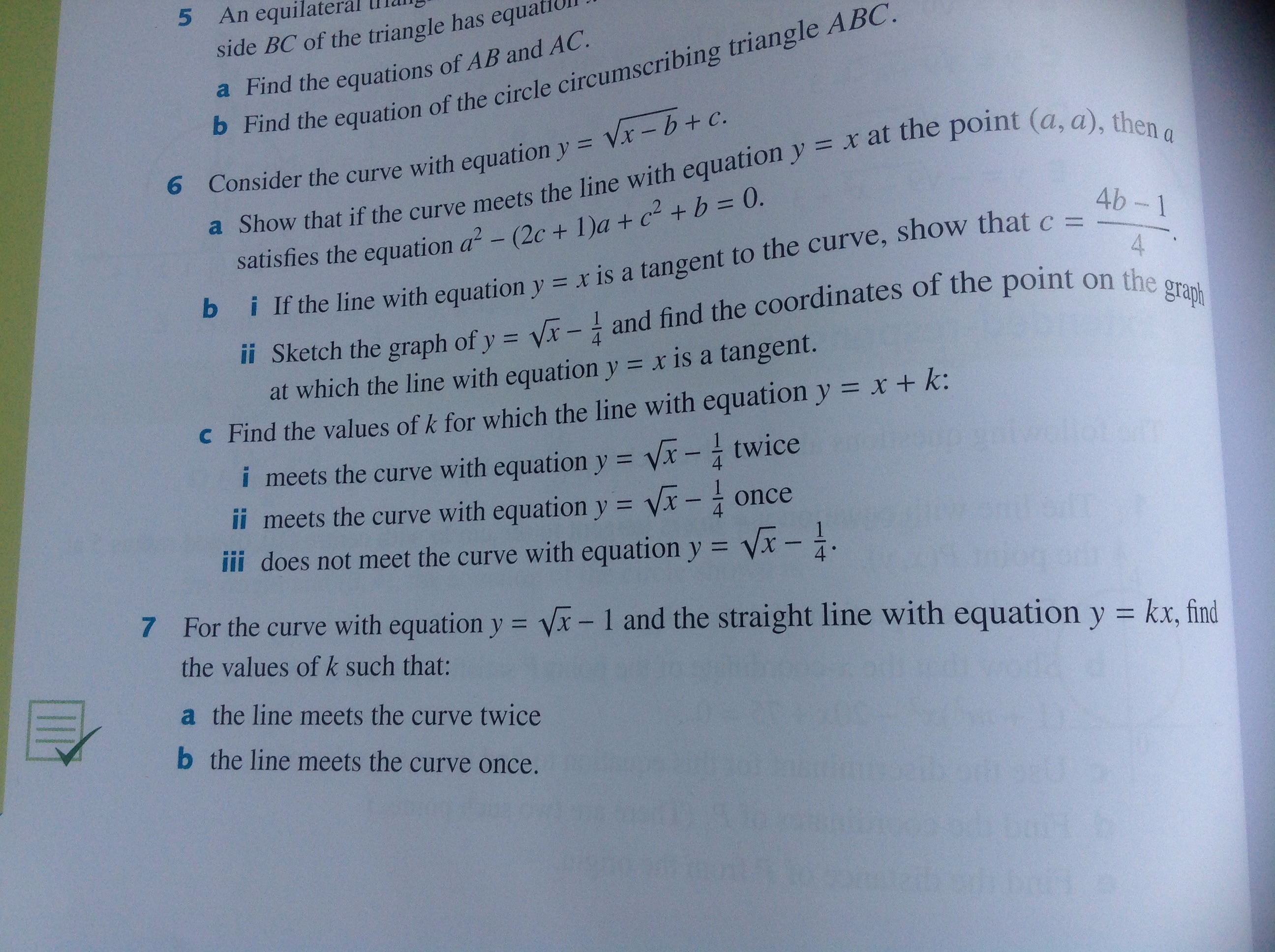How to solve worded questions involving gallery of graphs?

Can someone please explain to me how to do question 6 and 7?
Thank you very much!

Can someone please explain to me how to do question 6 and 7?
Thank you very much!
1 Answer
See explanation
Explanation:
6.a:
If this curve and line must meet then they must equal to each other:
Taking out minus and x.
Since it's the point
6.b.1:
To calculate zero points of quadratic funtion, we use:
where:
if:
Tangent line crosses curve only once, so we use
Substitute:
6.b.2:
We use the same logic as above:
(Note that D=0, which means we have only one possible sollution=>only one tangent exists)
graph{sqrtx-1/4 [-10, 10, -5, 5]}
6.c:
Let me skip that. It's just applying this:
7.b:
If the line must meet the curve once we use exactly the same process as above:
7.a:
We have the same equation:
Now we have to find 2 possible meeting points.
but that is not he end. k must have some minimum value. squareroot is always increasing therefore that line must be increasing too and that is true only when k>0. So the answer is an interval:

